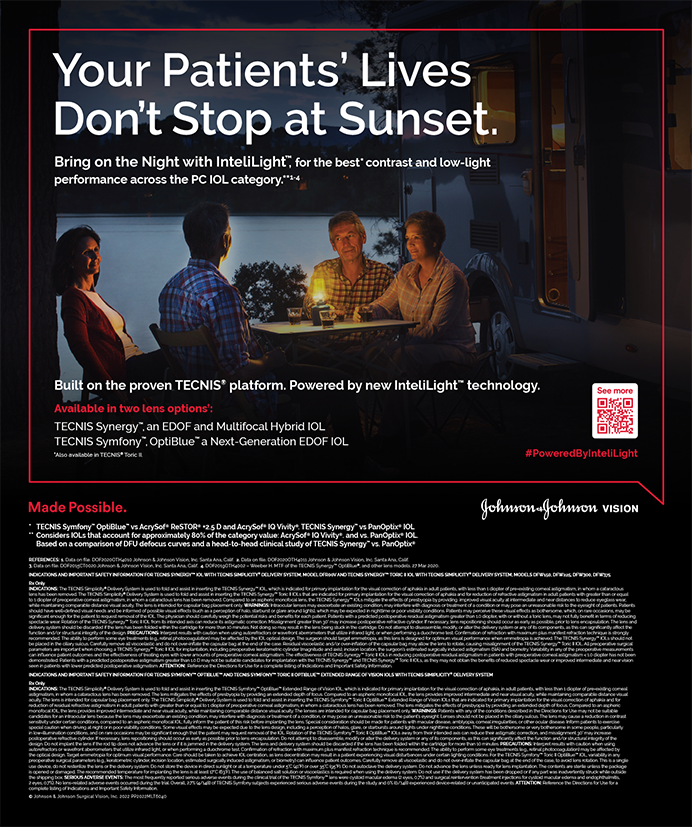How did you become interested in optics, ultrasonography, and IOL predictive formulas? Over the years, my practice has evolved into something of a safe harbor for other ophthalmologists. In the mid-1980s, I began to take on some of the more challenging anterior segment cases in our community. This responsibility grew to include unusual axial length measurements and complicated IOL power calculations. As technology continued to advance, accurate determination of IOL power became the main reason for patient referrals. Eventually, my staff and I made the decision to have it become our primary focus. Four years ago, I also began doing unusual IOL power calculations for members of the ASCRS Cataract Discussion Group, something that quickly expanded into assisting ophthalmologists around the world, help we now give on a daily basis via telephone, fax, and e-mail. At that time, cataract surgery began to be considered both rehabilitative and refractive. Interest in this topic is now tremendous. In the last year, I've delivered lectures on IOL power calculations in 10 different countries.
What has your work in developing countries taught you about the future of medicine in the US? The increasing sophistication of medicine and surgery in the US has coincided with the emergence of increasingly unrealistic expectations and a dissipating connection between physician and patient. Medical treatment is now viewed by many as a right, and even a commodity, with “someone else” being ultimately responsible for costs, outcomes, and even compliance. In developing countries, where patients are more responsible for their own health care, expectations are usually more realistic, and the bond between physician and patient is typically strong. If our society chooses to fully embrace the concept that every aspect of health care is to be provided free of responsibility, I feel that neither patient or physician will find it a satisfying experience.
What do you hope to accomplish professionally in the near future? Over the next decade, there are two areas in which I hope to make a contribution. First and foremost will be solving the riddle of the postkeratorefractive cornea. I'm also working with some innovative technology that may allow for exceptionally accurate IOL power predictions over the entire range of human anatomy without the need for complicated formulas. The application of this technology has the potential to extend beyond routine cataract surgery to include phakic IOLs.
What advice would you give young surgeons regarding IOL power predictions? Instead of delegating the process of IOL power calculations to technicians, young surgeons should become actively involved in every step of the process. Highly accurate IOL power predictions are the result of a chain of interconnected nuances. Tweaking only a single item (such as axial length measurements) doesn't dramatically alter the mean refractive outcome. From keratometry to the configuration of the capsulorhexis, every component of the process influences the outcome. For better or worse, both patients and colleagues judge surgeons by their refractive results. It's now necessary to pay as much attention to postoperative refractive accuracy as to surgical technique.
Which individuals have been the best examples for the way you practice and treat patients? My father, Harry E. Hill, MD, and his partner, Leo J. Rain, MD, have served as role models throughout my career. Both physicians embodied those human qualities best suited for a profession dedicated to service. The highest compliment I ever received was from another physician who said that he could tell from my manner that I was Harry Hill's son.


